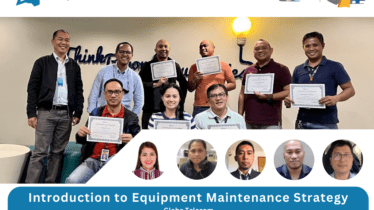Strategies to Optimize Shutdowns, Turnarounds and Outages Kevin Duffy, Kepner-Tregoe (Part 1 of 3)
The traditional view of operational shutdowns, turnarounds and outages (STOs) holds that they are maintenance and engineering events. This simplistic view is held by many organizations. A more realistic and holistic perspective, however, recognizes that the impact and scope of STOs extend far beyond the maintenance and engineering functions.
STOs can command significant capital and operating budgets. They attract the attention of shareholders and boards of directors, and impact inventory supply chains and customer relationships. They are, therefore, “whole business events”, not simple function-specific ones.
Considering all the potential ramifications, well-executed STOs can represent a source of competitive advantage for an organization. They can drive commercial performance, boost morale, bring recognition to high-performing teams and accelerate individual careers.
The corollary to this picture of success, of course, is that poorly executed STOs can cost an organization millions of dollars in lost revenue, drive up operating costs and cause permanent damage to the careers of those involved. This has long been true but is now amplified in the current operational environment, in which most organizations are operating with reduced workforces and resources.
Simply put: In today’s leaner and meaner business environments, STOs represent not only an increasingly significant challenge, but also an increasingly significant opportunity.
STOs consist of the following phases of activity:
-
Detailed planning and organization of the work involved
-
Removal of assets from production
-
Inspection and work execution, product changes, repairs, improvement activities or a combination of these
-
Restart of the asset/unit/plant and restoration to “should” performance levels
STO work is usually – but not always – recurring or cyclic in nature. An STO is unique in that it always involves the plant, unit or asset being taken offline or out of service. An STO is not considered to be complete when the individual work packages are completed. An STO is complete only when the asset, unit or item is returned to service and performing at the desired level.
STOs are more complex than other project-based events. Quite simply, they involve both planned activities and unplanned work resulting from inspection of part of a machine or asset which is not accessible or visible during normal operations.
The potential for identifying previously unforeseen or emergent work requirements discovered at inspection that must be performed within the defined time constraints of the STO adds the requirement of rapid troubleshooting and decision-making capabilities.
Take a moment to consider your organization’s current approach to conducting STOs. Is there a significant reliance on knowledge and experience? Are one or two team members considered critical to STOs because “they were there the last four times and know what happened”?
All too often, the execution of a STO (with all the dependencies and ramifications we considered at the outset of this article) rides on one or two highly experienced “hero” employees stepping up to solve the problem or “get it done” during STOs.
But given the demographic shift that is now upon us, many of these individuals are destined to leave the workforce in a relatively short time. This, of course, is in addition to the everyday issues of absence due to sickness, transfers to another part of the business, or career advancement with another company.
If the knowledge and experience previously relied upon are no longer available for any reason, all the business issues which depend on the STO are in jeopardy.
The challenge and opportunity then is to adopt a replicable, reliable, process-driven approach to STO management which harnesses – but is not totally dependent upon – team members’ knowledge and experience, and enables easy knowledge transfer from one person to the next.
In Kepner-Tregoe’s experience, the top challenges in managing STOs lie in the following critical areas:
1. Ensuring workforce safety, whether they are employees or contractors, is the No. 1 priority for the STO management team. STOs present numerous challenges for safety. Large numbers of contractors may be working on site for the first time with little knowledge of equipment and processes.
Employees will carry out many tasks which are not routine and only occur in the STO situations. For example, cleaning, inspection and repair will often be carried out with special isolation requirements in confined spaces or other challenging environments.
2. The development, deployment and communication of an effective STO process which is clearly understood by all stakeholders, and which navigates all concerned parts of the organization through the complex challenges presented. Too frequently, the STO process is unclear, fragmented and not shared. Without a guiding framework, the coordination and execution of the complex tasks involved become extremely difficult.
Many departments may need to plan inventory or resources if they are to be impacted in any way by the STO. A lack of general coordination is also compounded when the absence of a common approach results in a myriad of different methods being used, making coordination and communication close to impossible.
3. Managing project scope creep is typically one of the top challenges for most STO management teams. It is a particular issue in STOs where inspection is only possible when the process or asset is the STO (e.g. opening up a furnace to establish the amount of relining required).
Managers need prioritization tools to help them make better decisions on managing emerging work to stay within plan and budget targets. Without such prioritization tools, STOs can quickly experience scope creep, leading to other work cuts from schedules which can have detrimental effects on operational performance after recommissioning.
4. The capture, analysis and availability of relevant information and metrics via management information systems will enable the appropriate managing of activities and identification of future improvements. Measuring the right things, the right way, at the right time – and communicating them appropriately – allows STO leadership to maintain control of the diverse range of activities when work is being executed.
While poor planning is usually blamed for cost and time overruns, if problems continue in future STOs, they are very often symptomatic of the absence of a good measurement and control system. This absence will either hinder – or totally prevent – the organization from understanding and learning from the problems it experiences.
5. The existence of business processes which do not support the needs of the STO. We know from experience that organizations should continually evaluate (and, if necessary, adjust and align) their business processes in order to remain competitive, and that misaligned processes will cause inefficiencies.
In most organizations, business processes are designed to enable normal day-to-day activities. They are generally not designed to cope with major peak loads, special cause events and the other unusual demands that an STO places on them. A key opportunity for improvement in STO effectiveness lies in re-engineering basic business processes so that they can accommodate the needs of an STO and its related potential emergent work requirements.
6. Cost management and control in executing complex STOs. The existing reporting and control systems do not provide STO budget performance data until sometime after the STO is completed. The STO requires a cost monitoring program that provides timely data throughout the STO, enabling those controlling activities to make more informed choices on course of action.
7. The coordination and management of complex resources. STOs – and particularly larger ones – typically involve technical staff, corporate engineering, specialists, vendors, contractors, government bodies (safety, environmental, etc.) alongside internal employees, whom possess varying degrees of knowledge and experience.
It is not uncommon in some operational environments for the number of people on site to grow by 300 percent when contractor resources are used to assist with STO execution. This puts a significant load on processes such as induction, isolation training, material supply and equipment procurement.
Even if the internal team is generally experienced, an STO still can involve individuals in roles and carrying out key duties which are new to them. Without clear communication and management protocols, our experience has shown that up to 30 percent of the working day can be lost waiting for adequate instruction or searching for a resolution when a problem occurs.
8. Transforming an organization from reactive to proactive. Shedding a reactive culture and moving toward anticipating and resolving issues before they impact is also critical to STO success. Every organization has a hero or two – people who are remembered for “saving the day” – and the individual’s reward for this kind of heroism can be great on many levels (job security, advancement, financial incentives, recognition, self-actualization).
The problem is that heroism is only required when the organization is already in trouble. How many personnel are rewarded and recognized for the arguably more valuable heroism of thinking about and preventing things from going wrong? This is perhaps the most essential component in executing a successful STO.
The few most efficient organizations we know already have replaced the “go and do it” mantra with that of “go and think it through properly first”, and have appropriately adapted their emphasis in terms of performance and recognition systems to encourage this type of behavior.
9. Managing the expectations of diverse stakeholders. As noted previously, STOs are more business issues than engineering events; yet, in many organizations, indirect stakeholders are rarely involved in the outage management process. However, one thing is certain, their voices will certainly be heard if restart is problematic, or if supply to market becomes an issue.
A key skill requirement, and often a skill gap for todays STO leaders, is the engagement of key stakeholder groups early in the planning process. This enables adequate communication of the likely risks and consequences of the STO and keeps all impacted personnel informed during execution so they can plan their own areas of operation accordingly.



